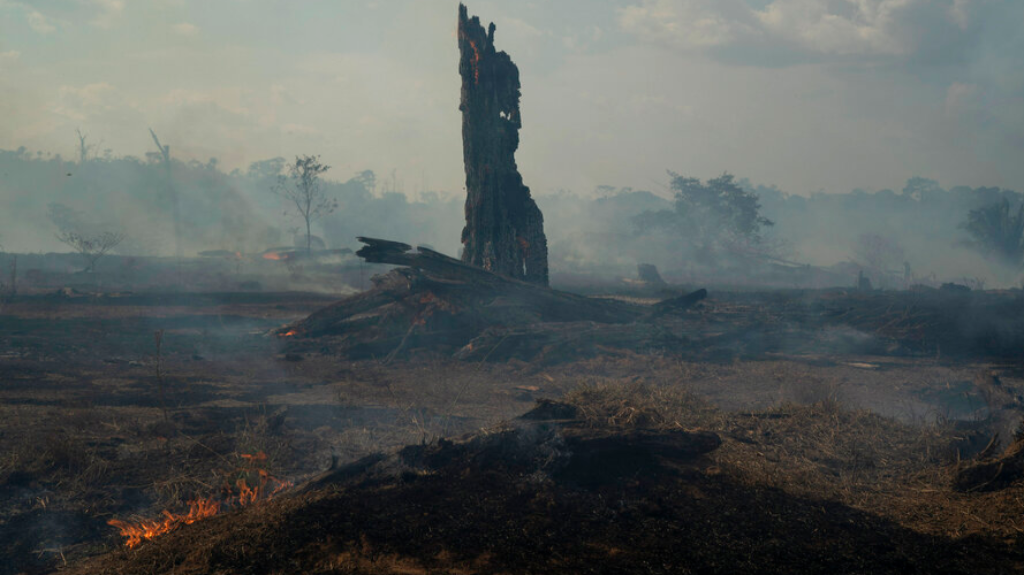By Eric Roston New York When it comes to saving the world’s rainforests, governments can make a big diff erence, and fast. Take Indonesia, which in 2012 surpassed Brazil as the world’s leader in tropical rainforest destruction. In 2017, it engineered a 60% drop in tree loss from the previous year by strictly enforcing protections in vulnerable regions. On the other hand, governments can reverse course just as swiftly. Take Brazil, where a decade-long trend of improving forest protections has now gone into reverse. It’s a concern both in and beyond the tropics, with multinational companies coming under increasing pressure to stop doing business with suppliers that ravage the environment. Rainforests host half the species on Earth, help regulate global weather patterns and produce much of the planet’s oxygen. Their disappearance, through burning or felling, creates about 10% of the greenhouse gases the world produces in a given year that drive climate change.
By one estimate, more tropical tree cover was lost globally in 2016 and 2017 than in any other years this century. The Situation A handful of nations are the guardians of the world’s rainforests, with Brazil home to one third and roughly 15% shared by Indonesia and the Democratic Republic of Congo. Critics blame Brazil’s relapse on the rollback of environmental protections and enforcement in the Amazon in recent years. One analysis pointed to an 84% year-on-year increase in forest fires to record levels in 2019, many caused by loggers incentivised by the government’s disdain for environmental oversight. Brazilian leader Jair Bolsonaro, who relishes criticism of his attitude toward the Amazon and jokingly refers to himself as “Captain Chainsaw,” is facing a backlash from trading partners including Germany, Norway and the European Union. In Congo, agriculture, logging and energy projects pushed deforestation to record levels in 2017. The global bright spot was Indonesia, where authorities imposed a moratorium on developing peatlands, carbon-rich areas where the tree canopy shields waterlogged soil. When cleared, peatlands are drained, leaving a vast area of tinder that can smolder under the ground for years. Combined with better educational campaigns and stricter law enforcement, the moratorium cut primary forest loss to the lowest level in 14 years, notwithstanding setbacks in Sumatra, an island that’s home to endangered tigers and orangutans. Tree loss declined yet further in 2018. The Background Although tropical deforestation rates have dropped by more than a third since the 1990s, rainforests remain on course to disappear in about a century. The 2015 Paris agreement to fight climate change recognised forests as part of the solution to curbing carbon emissions. Rainforests absorb prodigious amounts of carbon dioxide and store it in trees, other plants and soil. Forest fires in Indonesia in 2015 pumped out more greenhouse gases than the entire US economy. Tropical deforestation continues mostly because people, both near and far, demand timber as well as commodities — typically soy, palm oil, and beef — that flourish where forests get in the way. Indonesia, for example, delivers about half the world’s $50bn palm- oil crop each year. It’s cheaper than other vegetable oils, widely used in products from mayonnaise to makeup and a route out of poverty for farmers. Hundreds of international companies have pledged to clean up their supply chains, sourcing commodities only from producers certified as having sustainable practices. The Argument Climate scientists say that preserving rainforests, and restoring former forested land, represents a relatively straightforward and economical way to meet climate change targets. Such measures, they estimate, could help bring humanity about one- third of the way to the Paris goal of limiting warming to below 2 degrees Celsius (3.6 degrees Fahrenheit). Environmentalists argue over the best approach, but targets and protections have proven most eff ective only when strictly applied. On-the-ground strategies include removing roads into sensitive areas or paying rural and indigenous communities to maintain habitats. Activists urge rich nations to follow Norway’s lead and off er incentives to countries to curb forest loss (and to withdraw them if necessary).
Conservation groups say Corps should step up, for instance by including environmental audits in their financial reporting. They are pressing for better systems to certify producers of sustainably grown commodities; these make it easier both for companies to avoid illegal operators and consumers to make eco-friendly choices. There’s some way to go: A 2018 survey by environmental group Greenpeace found that all 16 multinationals surveyed either failed to publicly identify their palm-oil suppliers or used producers that harmed rainforests.



